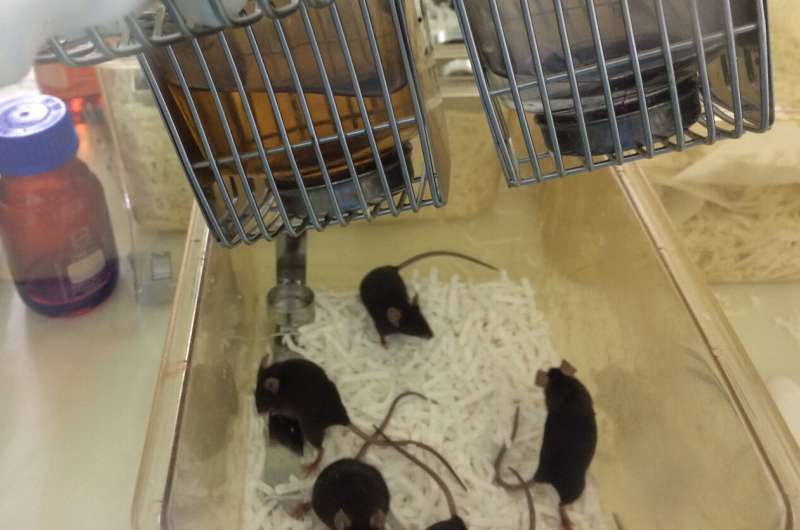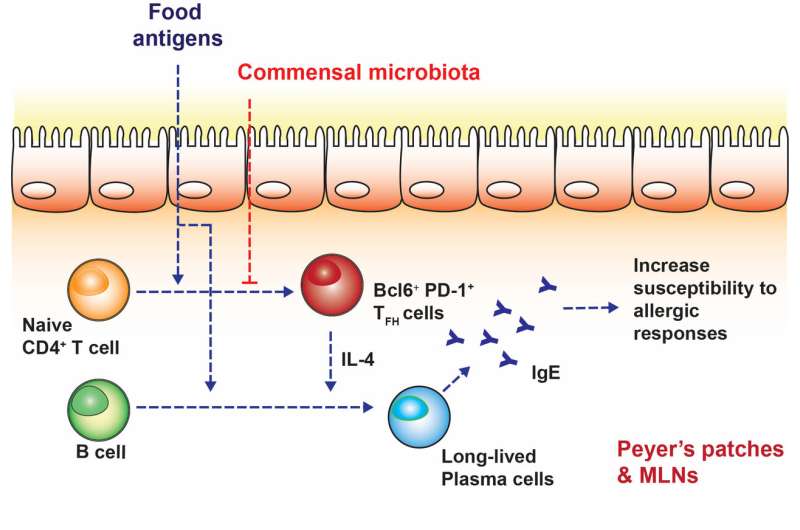May 23, 2019 report
Possible link between infant gut microbiome and development of allergies

A team of researchers affiliated with several institutions in Korea and Australia have found a possible link between the gut microbiome in infants and development of allergies. In their paper published in the journal Science Advances, the group describes their study of a certain antibody response in young mice and what they found.
Food allergies have been widely reported in the past few years, particularly in children. Scientists have been taking a closer look at the causes of the seemingly sudden rise in the number of people who are allergic to certain foods. In this new effort, the researchers looked into the possibility of a connection between food allergies and the gut biome.
The research started after some team members noticed that lab mice raised in a sterile environment (who also had no gut microbiome) expressed higher levels of immunoglobulin E (IgE) when they matured enough to start eating solid food. Prior research has shown that IgE is a mediator that plays a role during an allergic response—when allergens are detected, IgEs send out signals alerting other parts of the immune system, which in turn release chemicals that result in inflammation, a major allergy symptom.
To find out why the sterile mice were producing more of the antibodies, the researchers separated a group of mice into two sub-groups—one group was fed a normal diet while the other was put on a special diet designed not to provoke the immune system. They report that the mice who ate the normal diet developed a normal immune response, while those on the special diet did not. Suspecting that the lack of a normal healthy gut microbiome could be linked to an immune response triggered by certain foods, the team tried delaying the introduction of normal food for those mice on the special diet.

They report that doing so led to less of an increase in IgE production. A closer look showed that T follicular helper cells were involved in the heightened immune response. Such cells are generally more prevalent in young mice (and children). The researchers claim this is why children are more prone to allergic episodes than adults. The researchers also found that if they let the diet-restricted mice mingle with the mice on a normal diet, the restricted mice stopped producing high numbers of T follicular helpers and IgE numbers fell.
More information: Sung-Wook Hong et al. Food antigens drive spontaneous IgE elevation in the absence of commensal microbiota, Science Advances (2019). DOI: 10.1126/sciadv.aaw1507
Science X Network


















